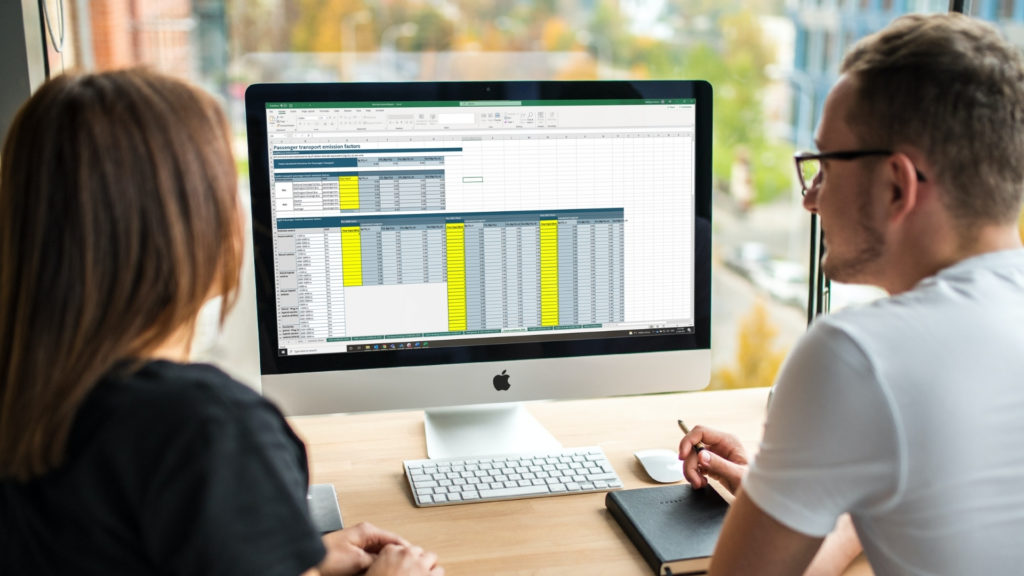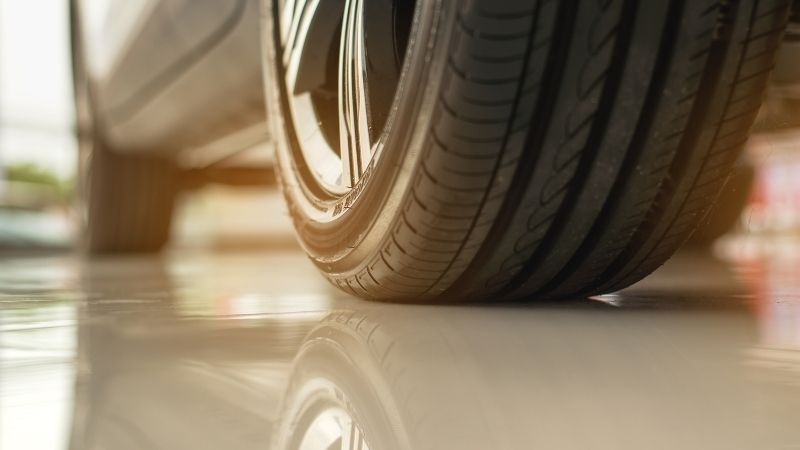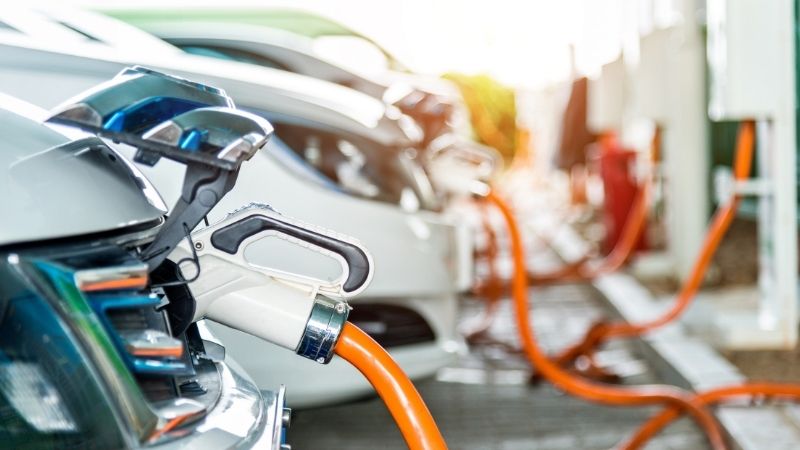Role
Industry
Solutions
Products
If your fleet is in a position to make the transition to Electric Vehicles (EVs), your pathway to reduced emissions is already looking well defined. But what if that’s not currently possible; what steps can you take to start reducing your fleet's greenhouse gas emissions?
There are proven ways to reduce your fleet’s greenhouse gas emissions that will generally deliver the bonus of saving you money too. Some of these will seem obvious, but it’s when they are put together in your Emissions Reduction Plan (ERP) that they become a pathway to a greener fleet.
There are nine action points in our suggested Emissions Reduction Plan. These have been chosen because our research indicates that they are being utilised by fleets in all sectors. They are also consistent with the successful strategies undertaken by many of our own customers.
Households can decide to make greener choices and expect to be congratulated for helping to save the planet. But businesses are held to a higher standard than good intentions alone. Your stakeholders will expect to see a return for the investment made, customers will expect to see proof of your commitment and employees will expect updates on the benefits produced through their enrolment in your ERP. With each of these audiences, there’s going to be a requirement to measure progress, and in order to do that you need to know where you are now.

Measuring your fleet’s carbon footprint will probably be new territory for you. Thoughts of expensive external consultants and the inevitable additions to your admin workload will be coming to mind. Fortunately, there is a way to measure and reduce your fleet's greenhouse gas emissions that’s similar to the way you measure every other aspect of your operations – through reports.
Smartrak’s Emissions Reporting solution removes the guess work and the hard work. This solution integrates with the New Zealand Transport Authority (NZTA), combining your fleet’s telematics data with the NZTA’s emissions profiles for various types of vehicles. The result is a downloadable report that meets international best practice: ISO 14064-1:2018 and the GHG Protocol Corporate Accounting and Reporting Standard. Smartrak is currently investigating how this same functionality can be extended to our Australian customers.
The Emissions Report solution is exciting news. For probably the first time, you can quantify your emissions and identify where they are being produced. Now you can follow a pathway to a lower emissions fleet knowing there are verifiable links between operational decision making and sustainability outcomes.
During the pandemic many of us got used to meeting virtually, through platforms like Microsoft Teams. It was a necessity, and it wasn’t always as compelling as meeting face-to-face, but for a great many requirements it worked just fine. Encourage a continuation of that versatility in your people by making sure that reasons to drive to a meeting are interrogated. Achieving this can be as simple as sending out a memo, explaining the role virtual meetings can play in meeting your sustainability goals. This could be the conscience trigger that makes someone stop and reconsider that journey. If you have a vehicle booking solution, make sure that a virtual meeting is always a prompt on the booking form. It will also pay to require cost centres for each journey, so department and team leaders look at each journey as having a cost consequence.
There are three factors to this:

Adopting a pooled fleet
Efficiencies are gained pretty much as soon as you bring all vehicles into a pool. A vehicle that was previously allocated to a single driver can now satisfy numerous journey requirements, with the result that underutilised vehicles can be retired. Fewer vehicles mean reduced exhaust fumes, but more importantly, it means money is being saved. With that reduced expenditure you are better placed to transition some of your petrol and diesel vehicles to greener alternatives.
Encourage ridesharing
If you run a pooled fleet booking solution it should have the functionality to share information when employees are travelling to the same destination. The solution’s reporting should also facilitate employee education on the topic, by providing data on how well car sharing is being adopted by employees and highlighting where it isn’t being supported.
Utilise a third-party vehicle-sharing provider for peak demand periods
It’s tempting to hold onto vehicles ‘just in case’. Resist that urge. ‘Peak demand’ signifies a period where normal operational requirements are being exceeded, it doesn’t make sense to hold onto a car simply to meet that. Any car that’s adding to your vehicle count is costing money and contributing to your fleet’s carbon footprint, if it’s role can be cost-effectively assumed by a third-party like Uber, do it.
Use the information collected by your telematics solution to dive deeply into the productivity profile of your vehicles and work teams. The information in your fleet management solution will highlight where time is being wasted because schedules are inefficient, or work teams not managed closely enough.
Trip reporting will pinpoint hardworking vehicles and those that are underutilised, which will offer opportunities to either retire vehicles or allocate tasks more evenly. A team that’s pushed to fulfil a heavy quoter of jobs will drive its vehicle harder, increasing fuel use and the production of emissions. This team is also more likely to be stuck in rush-hour at the end of the day, losing productive time to traffic jams.
Start using geofences to accurately identify how much time teams are on site, and whether their time is being productively used. Build actual on-site requirements into schedules by using the data produced by geofences.
Remember, wasted time is almost always a generator of higher emissions.
If you are serious about reducing your fleet's greenhouse gas emissions, you are going to have to address the issue of vehicle favourites. How many Utes does your organisation really need, or has a precedent been set for a section of the workforce that it’s hard to walk back from? The trays in many Utes are pristine because they rarely carry the loads they were designed for. Conduct an honest review of vehicle type and ask whether a more fuel-efficient vehicle could do the job of that large saloon or 4WD.
Your telematics solution should be able to help you here, by comparing fuel usage across the fleet so you can target those vehicles that are a luxury in a fleet that’s pursuing a low emissions footprint.
The right tyre pressure will help the kilometres to roll away and reduce the fuel you burn doing it. Just make sure you are actually checking the pressure. Simply giving each tyre a blast of air for good measure can seriously impact on tyre performance and road holding.

Of course, tyres are simply an introduction to the benefits derived from regular vehicle maintenance. Keeping your petrol and diesel vehicles well maintained and tuned will impact on petrol consumption and help to reduce the tailpipe effects of burning fossil fuels.
If you have a large fleet, with various time and milage milestones to keep track of in your service calendar, think about automating the process with a fleet management tool. It will ensure your fleet is running as cleanly as possible.
Virtually every fleet with a telematics solution deployed will also have the capability of checking whether drivers are speeding. If your fleet isn’t using this function, think seriously about the safety and fuel reduction benefits of doing so. Aside from helping to save the planet, you could end up saving lives too.
You should also target any unnecessary fuel use that’s the result of excessive idling. Your telematics will be able to measure this and report on it right down to individual drivers.
With both of these fuel-use reduction methods, it pays to bring your drivers onboard with what you want to achieve. Rolling in a greener fleet alongside safety and fuel savings presents a well-considered vision of fleet operations and culture that few could argue with.
Plug-in hybrid electric vehicles (PHEV) are a popular first step with drivers who aren’t convinced they can go the whole way with dedicated EVs. This is a greener option than sticking with purely petrol or diesel vehicles, but there is a tendency with some drivers to forget plugging in their PHEV. Having fossil fuels to fall back on when the battery is low can make drivers less diligent in plugging in.
As a rule-of-thumb, ensure that a PHEV is plugged in every night if you want it to operate as intended.
This blog is about what you can do to reduce your fleet's greenhouse gas emissions if adopting EVs isn’t right for your fleet, yet. Despite that, it pays to have EV adoption as a goal and to be making real progress towards it. There are numerous case studies available that show adopting EVs into a fleet isn’t the challenge many businesses assume it to be. This is because assumptions about the range capabilities required for fleet operations were exaggerated. One of Smartrak’s customers, Meridian Energy, used their telematics solution to gain accurate data on journey distances. They discovered their vehicles were travelling much shorter distances than expected. Read about their journey to a greener fleet here.

Range isn’t the only aspect that you will need to consider, there’s the issue of charging during the day if you want vehicles ‘topped up’ between journeys. Installing charges at work may not be as straightforward as you imagine. And if your drivers are taking vehicles home at the end of the day, what policy are you going to have in place regarding compensating the driver for using their household electricity to charge a company vehicle?
Reviewing the data provided by your telematics solution (and your Emissions Report) will identify those vehicles that are prime targets for an EV replacement. If you have leased vehicles in your fleet, you will also want to factor in EV transitions to coincide with vehicle turnovers.
There’s a helpful e-Book that provides information and welcome insight into these topics and more.
More sustainable operations are going to be a fact of life for every fleet. This reality means that preparation for that transition and positioning your fleet to achieve that change with minimal disruption are business priorities. The time to start that planning is now.
For access to resources that will help you to build a business case to reduce your fleet's greenhouse gas emissions, contact Smartrak’s Sustainability Champion by filling out the form below.